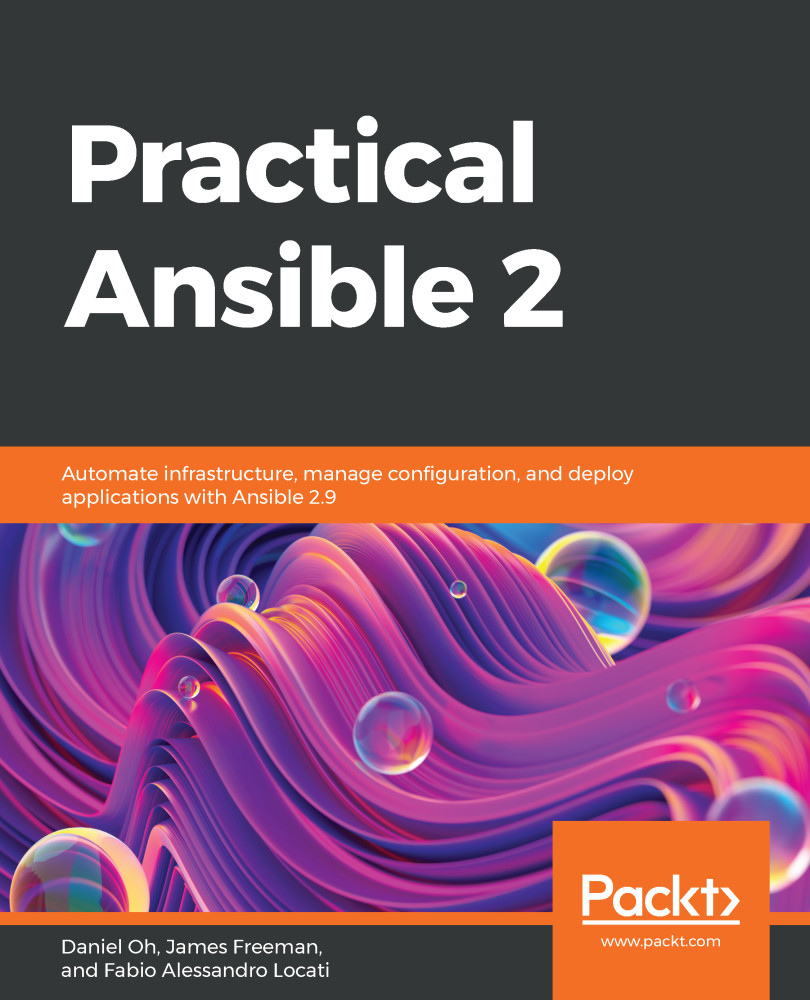Ansible is, at its heart, a simple framework that pushes a small program called an Ansible module to target nodes. Modules are at the heart of Ansible and are responsible for performing all of the automation's hard work. The Ansible framework goes beyond this, however, and also includes plugins and dynamic inventory management, as well as tying all of this together with playbooks to automate infrastructure provisioning, configuration management, application deployment, network automation, and much more, as shown:

Ansible only needs to be installed on the management node; from there, it distributes the required modules over the network's transport layer (usually SSH or WinRM) to perform tasks and deletes them once the tasks are complete. In this way, Ansible retains its agentless architecture and does not clutter up your target...


